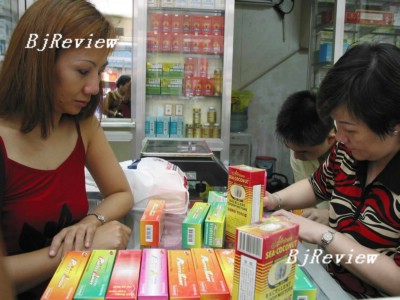
Encouraging imports and further opening the Chinese market are becoming new ways for China to target its burdensome trade surplus.
On December 13, 2006, just one day before the First China-U.S Strategic Economic Dialogue was held, U.S. Commerce Secretary Carlos Gutierrez and Chinese Vice Minister of Commerce Yi Xiaozhun witnessed in Beijing the signature of four important contracts between companies of the two countries. According to these contracts, China will buy aircraft engines worth of $550 million and airport fire trucks of undisclosed value, and at the same time, U.S. companies will purchase Chinese home improvement chains and establish new Internet cooperation with China Netcom.
These four deals not only show that China is expanding imports from the United States and opening its market, but also mark that in 2007, Chinese foreign trade policies will undergo significant strategic adjustment. The Central Economic Work Conference held on December 5-7 made clear that in 2007, the country would actively expand imports. This is the first time that China has clearly indicated it would "actively expand imports."
"Cutting the huge trade surplus is the priority task for 2007," said Bo Xilai, Minister of Commerce. "The yawning surplus with the United States and the European Union has strained China's foreign trade environment, triggering more frequent trade frictions," he continued.
Eliminating unhelpful exports
China aims to narrow the surplus, which jumped 74 percent to a record high of $177.5 billion in 2006. If it grows at the same rate this year, the trade surplus will mount to $300 billion. Early in September last year, China reduced tax rebates on exports of high energy-consuming, resource-intensive and environmentally harmful products.
The move reflects the Chinese Government's efforts to shift emphasis away from low-value-added exports. "The Chinese Government wants to see a trade balance. We don't deliberately seek a rising surplus," said Chong Quan, spokesman of China's Ministry of Commerce (MOFCOM). Last year China cut tax rebates by an average of 2 percent for sectors such as textiles, metallurgy, iron and steel. Only hi-tech industries are exempted. In fact, their rebate is being increased.
"Export rebates for high energy-consuming, high-polluting and resource-intensive products should be stopped," said Fu Ziying, Assistant Minister of Commerce.
Introduced in 1985, the tax rebates for exporters have made Chinese products more competitive in the international market. During the Asian financial crisis in the late 1990s, due to depreciation of currencies in many Asian countries, China had to increase its rebate rates by a large margin. However, the increasing trade surplus, which triggered more and more trade frictions, forced China to cut the tax rebates several times, even abolishing rebates for some products.
In November 2006, MOFCOM, the General Administration of Customs, and the State Administration of Environmental Protection announced the Catalogue of Prohibited Commodities in Processing Trade, with the aim of reducing export incentives to low value-added industries.
Meanwhile, China increased export tariffs of low value-added products such as textiles in order to curb exports. Since June 1, 2005, China has raised export tariffs on 74 Chinese-made textiles by 400 percent.
By lowering export rebates and increasing export tariffs, the Chinese Government enjoyed some success in curbing exports of high energy-consuming, high-polluting and resource-intensive products. Exports of coal dropped 12.7 percent, coke 10.7 percent, billet 35.6 percent and non-forged aluminum 20 percent year on year in the first six months of 2006, according to the National Bureau of Statistics.
| 